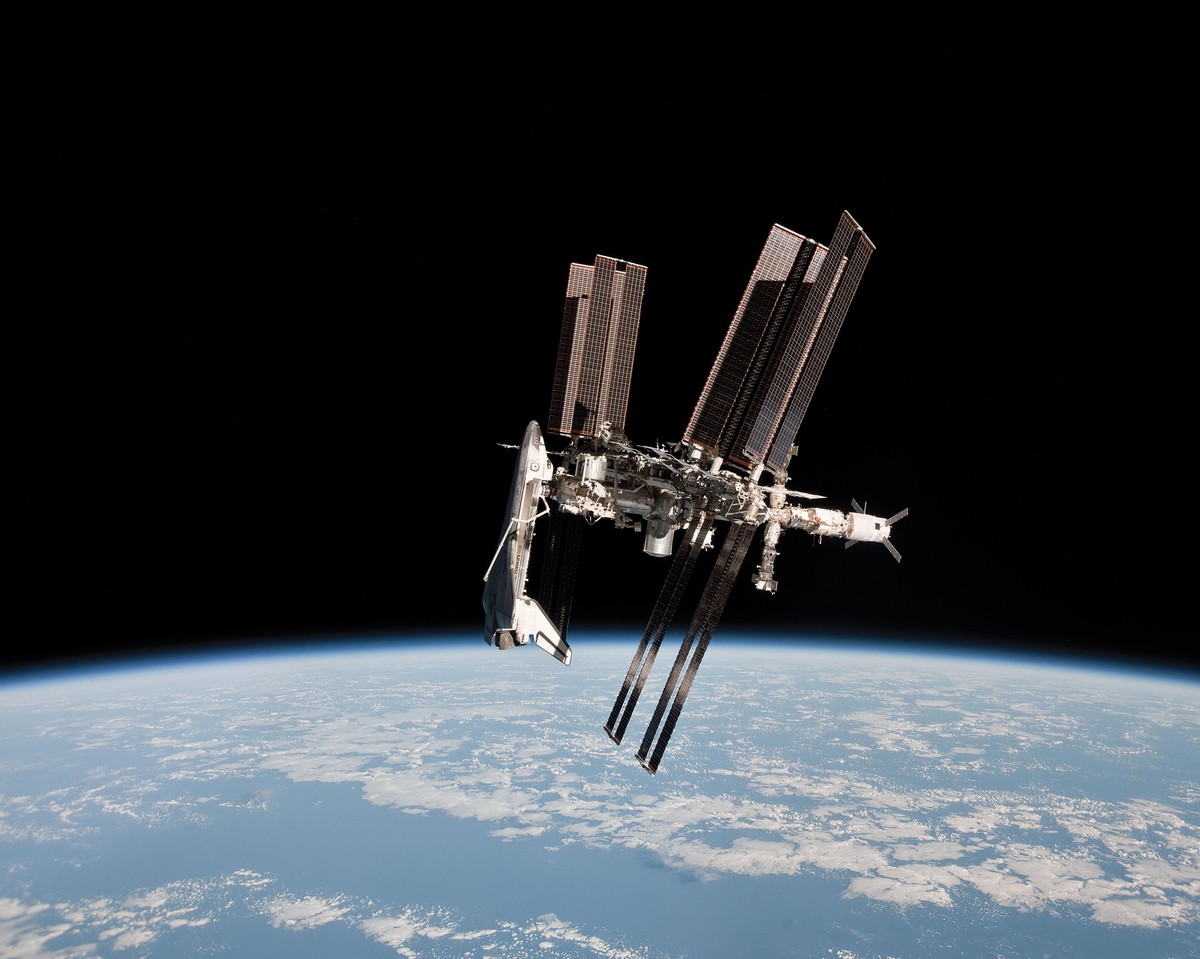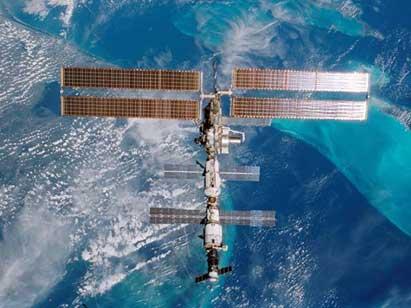Space menu Space menu
2010/09/01 Aulestiarte Lete, Izaro - Elhuyar Zientziaren Komunikazioa Iturria: Elhuyar aldizkaria
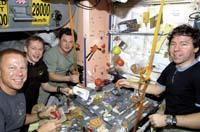
Russian Gherman Stepanovich Titov was the first cosmonaut to eat something in space in 1961 and travelled to three tubes as a toothpaste, one with vegetable puree inside, another liver leg and the juice, the third. A year later, the American John Glenn launched into space with pipelines with apple compote and sugary water in luggage. They both recognized that the food was not complex, but also highlighted that the menus that had been prepared were not satisfied.
A similar assessment was made by astronauts from other later missions, who said that the foods had little flavor, were unattractive and the menu was very monotonous. And, to a large extent, the challenge of giving a way out to those "complaints" that were made over many years around food has marked the trajectory of space gastronomy.
In this sense, it can be said in some way that the technological advances that have been produced in spacecraft to improve the missions and the steps taken in the search for suitable foods have gone hand in hand. For this purpose, they had to collaborate, among others, astronauts, technicians and engineers.
Astronauts managed to eliminate as quickly as possible both those recessed tablets in the tubes and the Cuban pills and products that replace food. NASA notes that the biggest step in space feeding was taken in 1973 with the Skylab's orbit. Astronauts began to be used with a minimum of 72 dishes and spoons, knives and forks.
Since then, however, many steps have been taken regarding the spatial menu. It is true that the subject arouses curiosity to many, but the expert in Food Technology, Jorge Ruiz Carrascal, considers that the "mystery" is not so much. "After all, eating down here or above is no longer so different," he said. Astronauts need a nutritious, healthy and comfortable diet, like those on Earth. The question is that your menu has to meet specific features, and many factors make all this something special."
"Even for long trips to the sea, to the highest peaks or to the North Pole, similar menus are usually prepared, and many of the products we consume daily are treated in a similar way, although we are not aware of it," he added.

Stability stability Stability Stability
To start a trip, whatever your destination, it has always been a matter of foreseeing how explorers will feed, especially on long expeditions. According to Ruiz, professor at the University of Extremadura and expert in Molecular Gastronomy, first of all technical participation is considered. The food of astronauts is designed to occupy the smallest possible space, to weigh little and last long.
It must be taken into account that food should be kept at room temperature, except in some case, since in spacecraft there are no cold or freezing machines. Thus, Ruiz says that the first characteristic that food must meet is its stability.
Some foods do not need treatment, since their stability is natural and can be transported to space like nuts. But there are others who have to be treated, among which is dehydration. Many foods are sent freeze-dried, such as macaroni and eggs, and before eating they must pour water so they can return to the same characteristics as when they are fresh. There is also a product with intermediate humidity, the amount of water is reduced but a soft texture is maintained (dried fruit, cecina...).
Fruits, pudings and some meats are treated with heat to kill bacteria, which even partially dehydrate. And other meats are irradiated for sterilization. "It is very important that foods do not present any microbial load or present risks of potentially pathogenic microorganisms. On Earth, even if you don't realize it, it's not uncommon for food to have a microorganism that can transmit a disease, but if that burden isn't big, nothing happens to us. In space, however, any infection can cause terrible damage; sick an astronaut would be very serious," said Ruiz.
The foods that leave the breasts are especially dangerous. Microgravity crumbs float, so they can enter any slot machine and put the entire system in danger of deterioration, such as drops of any liquid. In addition, if the crew breathe, they could get sick.
In 1965, in the mission Gemini 3 there was a curious anecdote related to papurras. John W. Astronaut Young entered the ship with a choppeds sandwich. He did it secretly to share with his partner Gus Grissom. The latter later said that "I looked at the machinery, I remember well how John suddenly told me: 'Hear captain! Are you going to take care of the sandwich? '. If he could have fallen from the couch, he would undoubtedly. A sandwich in your hands! ". The breasts did not take long to float through the machine room and the acid smell of meat was extended to the whole container. NASA intensified the regulations to observe the luggage of astronauts.
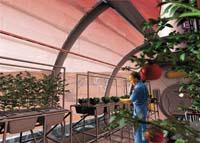
The gaseous products in space are also avoided. In fact, the gases we have in the stomach tend to go upwards, pressing the valve at the top of the stomach, so we eject the gases through the mouth (corcones). However, in microgravity the gases do not separate from the rest of the contents that we have in the stomach and remain in the stomach. "The reflection of corrosion remains because there is pressure, but the obstacle is that astronauts come with their content. And, of course, it is not at all comfortable. Beer or Coca-Cola can't be drunk up there," explains Jorge Ruiz.
In the rest, to prepare a food appetizing in flavor, add spicy ingredients and spices. "In the absence of gravity they have an always closed nose feeling, as if they had a waterfall. In this way, the smell and taste have been reduced, and many species are used to enhance the flavor. In addition, foods hardly have salt. They should be low sodium foods to avoid risks of osteoporosis, since in the absence of gravity astronauts tend to suffer this disease."
Hydroponic culture
All these characteristics and factors have been taken into account in every mission. But, according to Jorge Ruiz, as the trips lengthen in time, the challenges are also changing inevitably. "They plan to go to the Moon or Mars. And notice that the latter would be a three-year journey! Therefore, instead of carrying food, which is almost impossible, they must produce food in the ship itself. The hydroponic culture can be a solution".
NASA started about 10 years ago experiments to get food and oxygen through the plants. The plants grow in small containers (without soil) that provide the minerals and water they need to grow. They get rice, onion, tomato, soy, potato or lettuce. According to Ruiz, "getting vegetable products along this path is quite easy. The key is to get a balanced and enjoyable diet."
Another option is to reuse everything that is created in the spacecraft. "This can reach the last consequences. I refer to the use as fertilizer of the residues of astronauts, although only in hydroponic crops. In these situations it is always better to recycle and reuse everything possible."
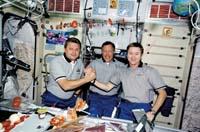
Challenges Challenges Challenges Challenge Challenges Challenges Challenges Challenges
As for the challenges of spatial gastronomy, both current and future, Ruiz has no doubt: "The challenge is not the only one. And for those of us who are working on food technology, the most interesting thing is that, the need to constantly respond to challenges of different nature."
"One of the priorities is, without a doubt, to find the way of self-supply in the long missions," he says. However, in addition to getting a healthy, practical and varied diet, Ruiz has clear that the key is that astronauts can eat what they like and that we have to continue working on it. "It is important that astronauts eat at ease. Psychologically it affects them a lot, they have to stay long away from home, living stressful situations, and food always helps to get well-being and joy. The fact of not tasting food is horribly noticeable in long missions. And the morale of the crew can not miss."
The opinion of astronaut Pedro Duque of the European Space Agency ESA is the same. Known closely, he has publicly claimed the importance of caring for food in space. In short, the menu offered to us is also a way of feeling that we are linked to reality. We need a varied and comfortable food to be able to feel that the Earth remembers us".

Gai honi buruzko eduki gehiago
Elhuyarrek garatutako teknologia





